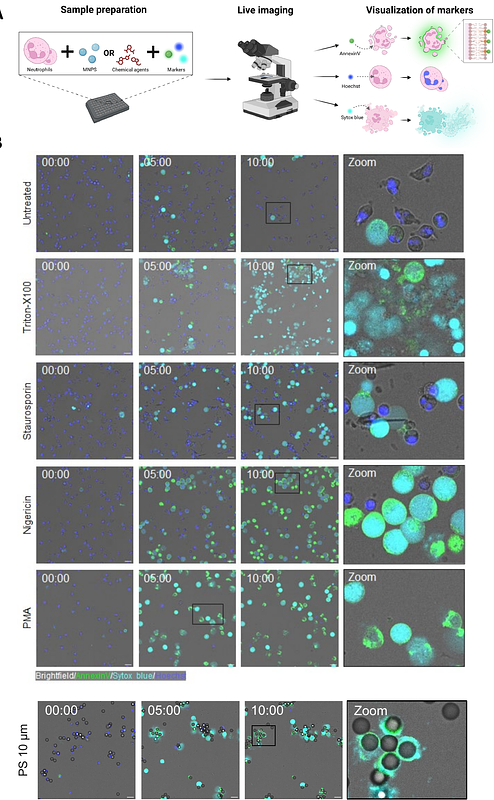Microplastics cross the murine intestine and induce inflammatory cell death after phagocytosis by human monocytes and neutrophils

Microplastics cross the murine intestine and induce inflammatory cell death after phagocytosis by human monocytes and neutrophils
Giustarini, G.; Skrabanja, T. L.; van den Berg, A. E.; van Staveren, S.; Vos, T.; Zhou, Z. H.; Klaessens, T.; Mulder, E.; Klazen, J. A.; Smit, J.; Pieters, R.; Koenderman, L.; Vrisekoop, N.
AbstractMicroplastics are contaminating the environment but also our food and drinking products. In a crucial study, microplastics have been detected in circulating human blood, urging the investigation of the effects of microplastics on human health. Here we aimed to determine the distribution of microplastics after oral exposure in mice and their interactions with and effects on mouse and human innate immune cells. We established that both 1 and 10m polystyrene (PS) particles penetrated the intestinal epithelium after oral administration and could be detected in blood and liver of mice after ten days of oral administration. Using intravital microscopy we captured the in vivo phagocytosis of 1m PS by mouse neutrophils in the liver. Pristine PS were barely phagocytosed by primary human phagocytes, however, 1 and 10m PS pre-incubated with plasma were readily phagocytosed by human neutrophils and monocytes. Plasma-coated 1 and 10m PS both increased human neutrophil and monocyte cell death but only after phagocytosis. Importantly, neutrophil cell death occurred a few hours after phagocytosing a single coated 10m PS while PS of 1m needed to be administered at a ratio of 27 particles per cell to induce significant neutrophil cell death. Neutrophil cell death upon microplastic exposure was characterized by extracellular DNA, which together with other released DAMPs can potentially trigger inflammation. Our findings suggest that microplastics could negatively impact the immune system and human health.